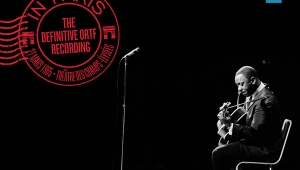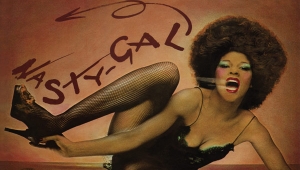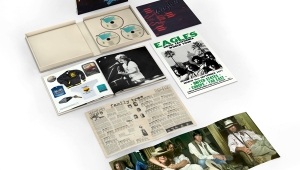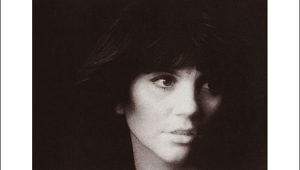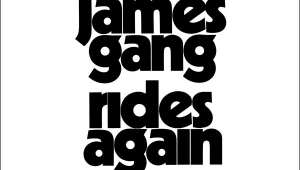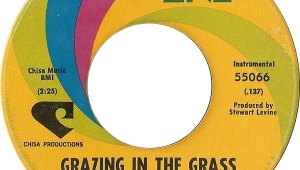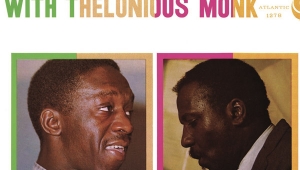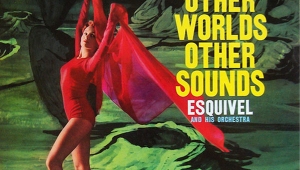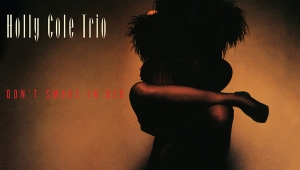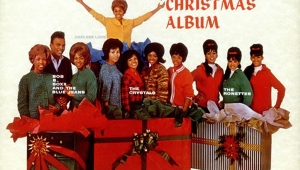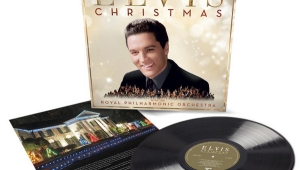| Columns Retired Columns & Blogs |
American Epic

Give Jack White credit. What other rock star has ever been so passionately interested in music history that he'd actually spend his own money to preserve old records? Not only that but his motives seem fairly pure. While he's probably not losing money on things like the beautifully done Paramount Records Wonder Cabinets that were released by his Third Man Records label four years ago, those were very specialized products, done in limited quantities, at a fairly reasonable price. White's unlikely turn towards becoming the most high profile and effective preserver of recordings, most electronically recorded and then released on 10" 78 rpm discs, have even landed this White Stripe on the staid board of the Library of Congress National Recording Preservation Foundation.
Shellac 78 records, those fragile essential bits of music history, were first played on phonographs in the 1890s after Emile Berliner invented the flat disc which replaced the original wax cylinders that were played on the original phonograph Thomas Edison invented in 1877. Because most of the metal parts that they were made from are gone, 78s are now the only way most early American music still exists.
American Epic, a film and music project helmed by heavyweight executive producers Jack White, Robert Redford, and T Bone Burnett, has decided that the only way to truly preserve what's left of this legacy is ferret out the best remaining 78 rpm copies from collectors the world over and then sink dollars and time into making the highest quality digital transfers possible.
The focus of the films, divided into four parts and shown on PBS (the films can be streamed at PBS.org and a DVD of the entire series is available at www.shoppbs.org) is the rural music of America. The films have a wise structure that uses a single tune by a single artist such as Tejano/conjunto legend Lydia Mendoza's "Mal Hombre," as jumping-off point for a deep dive into that artist's life and career. Mississippi John Hurt, Charley Patton, The Carter Family, The Breaux Family, and Will Shade of the Memphis Jug Band are all profiled. In the last episode, Shade and the others have their songs covered by modern artists who re-record them on a restored portable recording rig. In another smart move, many of the usual suspects like Robert Johnson, who has a track on the boxed set, or Leadbelly are not present. Jazz, a more urban music, is also not part of this series.
Most of the music in American Epiccame from rural, mostly poor folk. This was because as Redford, who narrates the series, explains in the first episode ("The Big Bang"), once urban music buyers and listeners began to listen to the radio, which was free and constant, and slowed their record-buying habits, record labels decided that they needed to cater to more rural buyers and so began recording regional styles. Armed with a portable record-cutting machine and a condenser microphone, teams of talent scouts and engineers fanned out across the country and captured what Jack White calls in one episode, "happy accidents that happened when they tried to monetize the invention of the electrical recording system."
It's hard to imagine today, but before television and the Internet, before McDonalds, Starbucks and streaming music on your phone, America actually had regional music scenes that were the very embodiment of folk art. They were isolated from each other and the rest of the country. They highlighted different instruments. They produced star artists and hit records. And with such epochal artists as The Carter Family and Robert Johnson, the influence of this early 20th century American popular music spread around the world and is arguably the most potent American artistic contribution to world culture.
Sadly, as is common with the record business which has never been a model of vision or wisdom, most of the source material for this proud legacy was lost during the depression and WWII when 90% of the metal these recordings were captured on, was melted down for scrap. Further damage was done when during WWII many of the shellac 78s were melted down for use in making paint.
What's most interesting for audiophiles is the huge improvement in the quality of the sound coming from these 78 transfers, both in the film and especially in the 5-CD boxed set of the same name. As the liner notes for the boxed set make clear, sonic restoration was a big part of the overall mission of the entire project. Sound Engineer Nick Bergh rebuilt a 1920s-vintage Western Electric Recording system that gave him a greater understanding of how this stuff was recorded in the first place. Using modern and vintage gear, he then succeeded in removing a lot of distortion and noise without shaving away too much of the music. Like the transfers on Jack White's Paramount boxes, the resolution and level of detail on these CDs is audible and impressive.
"The recordings in this set are special since they utilize the earliest and simplest type of electric recording equipment used for commercial studio work," engineer Bergh says in the liner notes to American Epic. "As a result they have an unrivaled immediacy to the sound. At the same time that they are low fidelity by most modern technical standards, they are simultaneously high-fidelity in ways that are less easy to quantify . . . [and] many of the most expensive pieces of [modern] audiophile gear follow the structures of this early equipment."
"In the new transfers we could hear—for the first time in 80 years—what the music must have sounded like in the rooms where it was recorded. We could hear subtle vocal inflections, instruments that weren't audible before, the tapping of a musician's foot on the floorboards and even get a sense of the `room sound' of the particular studios. It was an astonishing experience, almost as if we were the original record scouts, hearing these artists performing in front of us."
Bravo Jack White! Keep those spectacular digital transfers coming!
- Log in or register to post comments

